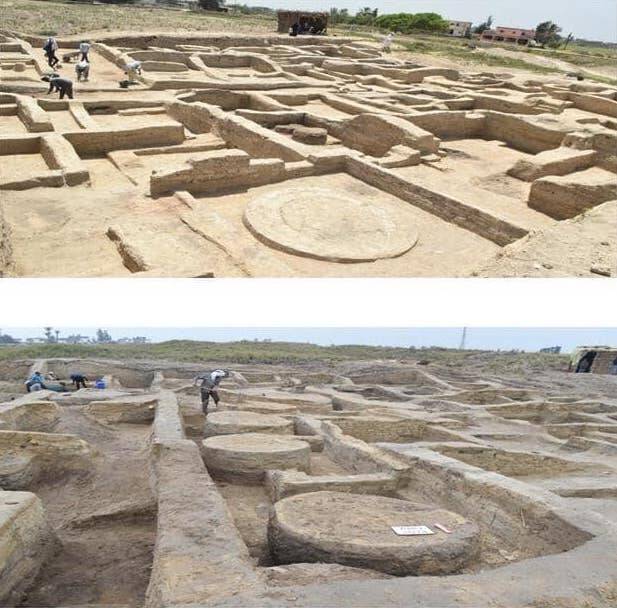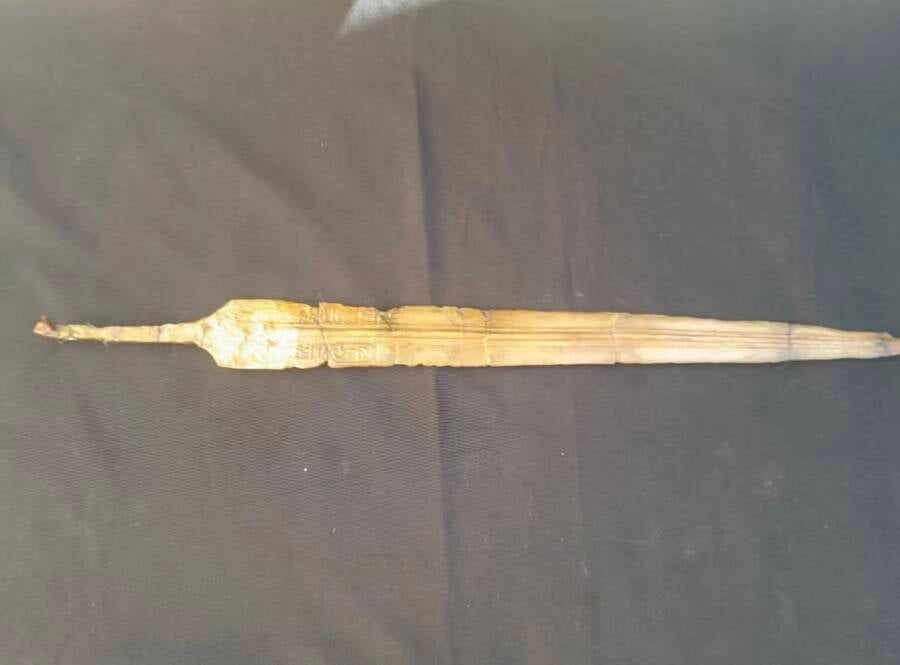This New Kingdom fort likely helped ancient Egypt defend itself from invasion by both Libyan tribes and the "Sea Peoples" in the era surrounding the reign of Ramses II.

Egyptian Ministry of Tourism & AntiquitiesThe military complex found in the Beheira governorate dates back to the New Kingdom period.
Archaeological excavations in Egypt’s Hosh Issa district have revealed the presence of a 3,000-year-old fort used to protect the New Kingdom from “potential invasions by Libyan tribes and Sea Peoples.”
The mudbrick ruins include the remains of military barracks for soldiers, as well as various storage rooms for weapons, food, and other provisions. Archaeologists who participated in the excavation also noted that the precise nature of the buildings’ layout highlights the advanced engineering capabilities of the ancient Egyptians.
Within the ruins, archaeologists also came across several artifacts and personal items that once belonged to Egyptian soldiers stationed at the site three millennia ago.
The Discovery Of An Egyptian Military Fort From The New Kingdom

Egyptian Ministry of Tourism & AntiquitiesThe ruins of the New Kingdom military fort discovered at Tel Al-Abqain.
The archaeological expedition was led by archaeologist Ahmed Said El-Khar of the Supreme Council of Antiquities (SCA). Speaking with Ahram, Secretary-General of the SCA Mohamed Ismail Khaled said of the newly discovered fort: “It is an important discovery highlighting the strategic role of [the] Tell Al-Abqain are as a crucial military outpost on the Western military road, protecting Egypt’s northwestern borders from potential invasions by Libyan tribes and Sea Peoples.”
Previous research has suggested that several dominant civilizations collapsed around 1200 B.C.E. due to invasions by these so-called “Sea Peoples,” though it isn’t entirely clear who, exactly, this refers to. In any case, it seems that fortified structures, such as the one in Hosh Issa, may have been successful in driving off these invaders, allowing the Egyptian kingdom to survive.

Egyptian Ministry of Tourism & AntiquitiesVarious artifacts found at the site, where archaeologists uncovered a number of engraved scarabs.
As Khaled notes, this fort and others like it were carefully designed, divided in half and separated by a narrow passage. This type of engineering was pioneering for its time and likely contributed to the stalwart defensive capabilities of the structure. It underscores both the ingenuity of ancient Egyptian engineers and the ability of these builders to mold their environment for military and practical matters, researchers say.
Artifacts Uncovered Inside The Ancient Egyptian Military Barracks
In addition to the fort’s structure itself, researchers found several artifacts within the ruins that paint a picture of what life was like for Egyptian soldiers some 3,000 years ago. These artifacts include various provisions, storage vessels with the remains of fish and animal bones, large granaries, and pottery ovens.
Discoveries like these offer some insight into the personal lives and military activities of the fort’s occupants, but there was one artifact that especially intrigued researchers: a bronze sword engraved with the cartouche of King Ramses II. The presence of this sword illustrates just how important the fort had been during the reign of Ramses II.

Egyptian Ministry of Tourism & AntiquitiesThe sword found at the site, bearing the cartouche of Ramses II.
Other artifacts found at the site include a wide range of personal items, including hunting tools, personal adornments, religious items, protective amulets, weapons, and two limestone blocks. The first was inscribed with hieroglyphics listing the titles of King Ramses II, while the other belonged to an official named “Bay.”
According to Ayman Ashmawy, head of the Egyptian Antiquities Sector at the SCA, researchers also came across the burial of a cow at the site, which served as a symbol of strength, abundance, and prosperity for the ancient Egyptians.
Finally, researchers also announced the discovery of two engraved scarabs. One bore the inscription “Amun — Lord of the Sky,” and featured a lotus petal. The other was engraved with the name of the deity Ptah.
Taken altogether, this discovery offers significant new insights into the lives of Egyptian military personnel during the New Kingdom period, which lasted from the 16th to 11th century B.C.E. Thus these barracks serve as an invaluable time capsule revealing what life was like there roughly 3,000 years ago.
After reading about the discovery of this ancient military fort in Egypt, learn all about when the pyramids were built. Then, read all about who actually built the pyramids.





